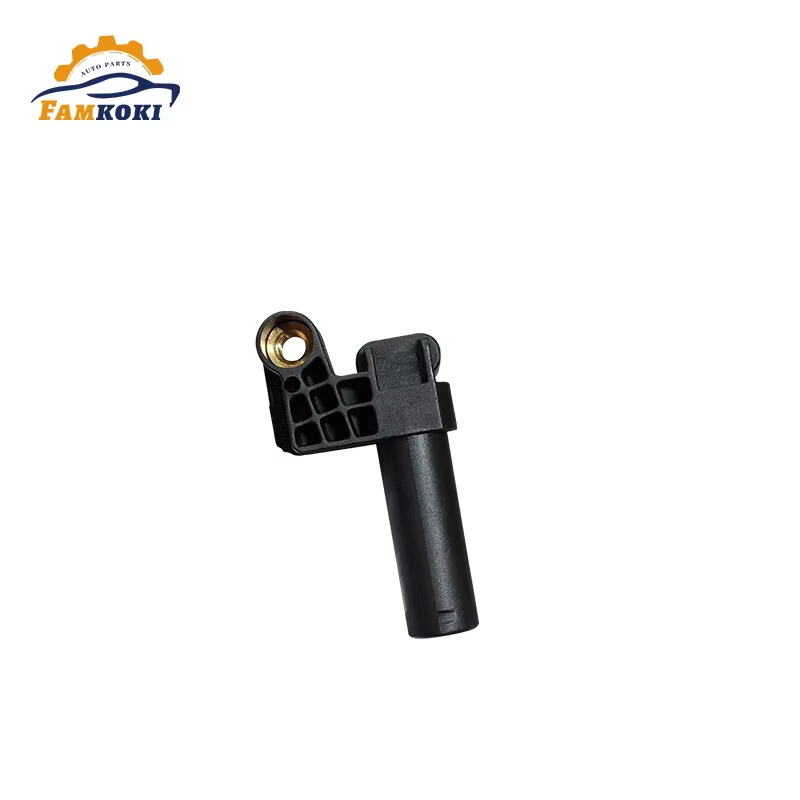What are Oxygen Sensors and Their Importance?
Oxygen sensors are critical devices used to measure oxygen levels accurately in different settings, including automotive, medical, and HVAC systems. These sensors ensure optimal functioning and safety by detecting oxygen concentration in the environment. In industries like automotives, they play a significant role in optimizing combustion processes, which ensures efficient fuel usage and reduced emissions. The medical field utilizes oxygen sensors in respiratory equipment to maintain appropriate oxygen levels, ensuring patient safety and better health outcomes.
In automotive applications, oxygen sensors are vital for enhancing fuel efficiency and minimizing emissions. They provide real-time data to the Engine Control Unit (ECU) to adjust the air-fuel mixture, ensuring complete combustion and less harmful emissions. According to the U.S. Environmental Protection Agency, the efficient use of oxygen sensors can lead to a reduction in carbon dioxide emissions by approximately 25%. This reduction not only benefits the environment but also complies with stringent emission regulations.
Furthermore, continuous monitoring of oxygen levels is crucial for safety, especially in confined or industrial settings where air quality might be compromised. Regular inspection and maintenance of oxygen sensors help prevent any potential hazards, such as oxygen deficiency or carbon monoxide buildup, both of which can lead to dangerous and life-threatening situations. Fluctuations in oxygen levels can present severe risks, making the role of oxygen sensors indispensable in maintaining safe and healthy conditions across various environments.
Potential Risks Associated with Oxygen Sensors
Oxygen sensors, while vital for various applications, pose risks primarily due to exposure to hazardous materials. In environments where sensors detect toxic gases, the danger to safety and adherence to environmental standards is significant. To mitigate these risks, it is crucial to handle these sensors properly and ensure regular calibration. Calibrated sensors can detect minute changes in oxygen levels, providing critical data for maintaining safe environments.
High temperatures and burns are also significant risks for oxygen sensors, especially when used without proper safeguards. Operating in extreme conditions can lead to overheating, causing potential sensor failure or complete system shutdown. This failure could trigger equipment damage and personal injury, emphasizing the importance of incorporating protective measures and monitoring systems to prevent such occurrences.
Sensors are also vulnerable to electrical hazards and shock risks, especially when mismanaged or exposed to moisture. Inadequate maintenance increases the probability of malfunctions, potentially leading to electrocution. Routine checks and maintaining dry operating conditions are vital to safeguard against these risks.
Mechanical damage, resulting from environmental stressors, can impair the accuracy of oxygen sensors. Over time, environmental factors such as vibration, temperature fluctuations, and humidity can degrade sensor performance. Regular inspections and implementing protective enclosures can preserve sensor functionality and ensure reliable performance in various applications.
Finally, improper installation of oxygen sensors can lead to inaccurate readings and possibly cause system-wide failures. Inaccuracies in sensor data can disrupt entire processes, resulting in operational downtime and financial implications. Hence, it is imperative to follow precise installation guidelines and frequently assess system configurations to ensure the sensors are consistently providing accurate and reliable data. Utilizing best practices in the installation and maintenance of oxygen sensors can mitigate these potential risks and optimize their performance in critical applications.
Essential Safety Precautions for Working with Oxygen Sensors
When working with oxygen sensors, the priority must always be safety, beginning with the use of proper personal protective equipment (PPE). Employing PPE such as gloves and goggles is crucial for safeguarding against chemical exposure, electrical hazards, and sharp objects. This precautionary measure reduces the risk of injury and ensures a safer working environment for technicians involved in the handling and maintenance of these sensitive instruments.
Another vital safety measure involves allowing adequate cooling time before touching oxygen sensors. These devices often retain heat from their last operation, posing a risk of burns if handled prematurely. Implementing a cooling protocol can prevent such injuries, thus fostering a safer work setting for all involved personnel.
Additionally, disconnecting power during maintenance activities is imperative to eliminate the risk of electrical shocks. Ensuring that sensors are powered down before any evaluation or repair work is conducted shields workers from potentially dangerous electrical hazards. This practice promotes a culture of safety and vigilance in industrial environments.
Careful handling of oxygen sensors during storage and transport is essential to maintain their functionality. These are delicate devices, and ensuring they are properly protected from physical damage will help preserve their accuracy and reliability. Additionally, following the manufacturer's installation guidelines is crucial for safe and correct operations. Adherence to these standards minimizes the risks related to improper installation, which might lead to inaccurate readings or device malfunctions. Such diligence in handling processes reinforces safety standards and mitigates potential operational risks.
Conclusion
Proper handling of oxygen sensors is essential for ensuring their safety and functionality in various applications. Whether in industrial or medical settings, correct usage not only reduces potential hazards but also enhances sensor performance. Mishandling can lead to significant risks, underscoring the importance of education and training in their proper use. By adhering to best practices, individuals and organizations can mitigate potential dangers associated with oxygen sensors.
The long-term benefits of safety compliance with oxygen sensors extend well beyond immediate safety concerns. Organizations that prioritize safe handling practices can enjoy improved operational efficiency, reduced liability, and a culture that champions workplace safety. Maintaining vigilance in the use of oxygen sensors can lead to substantial cost savings, ensuring that both equipment and personnel remain in optimal condition. Embracing these protocols not only safeguards the workforce but also enhances trust in sensor technologies, ultimately leading to a safer and more efficient operational environment.
FAQ Section
What are oxygen sensors used for?
Oxygen sensors are used to accurately measure oxygen levels in various environments such as automotive applications, medical devices, and HVAC systems, ensuring proper functioning and safety.
Why is regular maintenance of oxygen sensors important?
Regular maintenance of oxygen sensors is important to prevent hazards like oxygen deficiency and carbon monoxide buildup, and ensure accurate readings for optimal performance.
What safety precautions should be taken when handling oxygen sensors?
When handling oxygen sensors, it is crucial to use personal protective equipment, allow adequate cooling time, disconnect power during maintenance, and follow manufacturer installation guidelines.
What are potential risks associated with oxygen sensors?
Potential risks include exposure to hazardous materials, high temperatures, electrical hazards, and mechanical damage. Proper handling and regular maintenance can mitigate these risks.
 EN
EN
 AR
AR
 FR
FR
 KO
KO
 PT
PT
 RU
RU
 ES
ES


